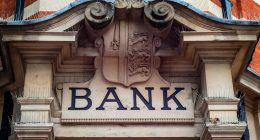The conflict in Ukraine was the main focus once again, so traders once again had to balance developments there with rising inflation fears and central bank expectations.
Notable News & Economic Updates:
China reports highest daily tally of COVID-19 infections since pandemic began
Swiss National Bank says they’re ready to intervene in Swiss franc if strength persists
EU announced on Tuesday that it aims to cut dependence on Russian gas by almost 80% this year
Nickel prices double to record $100,000 a ton on Tuesday, trading suspended in London
U.S. government announces embargo on Russian oil and gas on Wednesday
RBA Governor Lowe says its plausible the cash rate will rise later this year
The Ukrainian military has agreed to a 12-hour ceasefire with Russia on Wednesday
EIA: U.S. oil stockpiles fell 1.9M barrels last week; oil jumps after UAE says it is committed to OPEC+ supply pact, will not raise output on its own
No progress on Ukraine ceasefire in Lavrov-Kuleba meeting on Thursday
Russia’s Putin sees ‘positive shifts’ in talks with Ukraine on Friday
Intermarket Weekly Recap
The war between Russia and Ukraine topped market stories once again, having a pretty similar influence on the financial markets as last week. Because of this we saw weakness early in the week for equities and crypto, while oil, gold and the U.S. dollar saw green on Monday and Tuesday.
Arguably, the biggest short-term catalyst of the week came on Wednesday as a ceasefire was announced in Ukraine to allow refugees to evacuate. Diplomatic talks between Ukrainian and Russian foreign ministers, possibly adding to optimism on the situation.
These events correlated with the fall in oil, gold and other commodity prices, while equities and crypto managed to make some gains during the Wednesday U.S. session.
Unfortunately for those looking for peace and some risk-on market behavior, those conditions didn’t hold on Thursday as no progress in the ceasefire talks were reported. This seems to have been the main headline of the day, prompting a move lower in equities and crypto, while commodities only halted their slide lower.
In terms of bond yields, we saw a nearly one way move to the upside this week, likely a reflection of market fears that inflation may get worse. This is not only likely due to the rising oil prices, but also the long string of stronger-than-expected inflation data points released this week from around the globe.
In FX, there didn’t appear to be much in terms of strong directional moves, but volatility did remain relatively elevated. The big winner of the week seems to be the euro after a Monday dip.
There doesn’t seem to be a clear direct catalyst for the broad bullish move, so it’s likely this was some mix of shorts taking some profit ahead of the European Central Bank monetary policy meeting and/or broadly oversold conditions on the euro in general.
The U.S. dollar and the Canadian dollar battled it out for the second and third place spots. Safe haven flows and FOMC rate hike expectations next week likely lifted the Greenback, while rising oil prices and a strong Canadian jobs report had traders buying up the Loonie ahead of the weekend.
USD Pairs

Overlay of USD Pairs: 1-Hour Forex Chart
U.S. consumer credit rose by $6.8B in January
U.S. mortgage applications jump 8.5% as Russia’s war pressures rates
U.S. trade deficit increased 9.4% in January to $89B; Exports fall 1.5% vs. an 1.8% increase in imports
The U.S. consumer price index jumped 7.9% y/y following a 7.5% y/y read in January
Weekly U.S. initial jobless claims tick up to 227K vs. 216K the week before
University of Michigan prelim consumer sentiment: 59.7 in March vs. 61.4 forecast; lowest since 2011
U.S. Senate approved $13.6B aid package for Ukraine
GBP Pairs
U.K. house prices rise at fastest rate in 15 years, says Halifax
U.K. BRC retail sales increase by 2.7% y/y in Feb thanks to furniture and home accessories demand
U.K. salaries rise as competition for workers stays hot
U.K. GDP expanded by 0.8% in January vs. expected 0.1% growth and -0.2% fall in December
U.K. goods trade deficit widened from 12.4B GBP to 26.5B GBP
U.K. consumer inflation expectations advanced from 3.2% to 4.3% in Feb.
EUR Pairs
German factory orders rose 1.8% m/m in January vs. 2.8% m/m in December
Eurozone Sentix Investor Confidence plunges to -7.0 in March from +16.6 in February
GDP up by 0.3% and employment up by 0.5% in the euro area in Q4 2021
Germany industrial production unexpectedly accelerates from 1.1% to 2.7% in Jan
The European Central Bank announced plans to wind down stimulus in Q3 2022, sooner than planned and expected, if economic conditions allow
Germany consumer price index: +5.1% y/y; +0.9% m/m
CHF Pairs
Recent safe-have flows have pushed the franc higher against the euro; Swiss National Bank surprises the markets with a renewed pledge to stem franc’s rise
Swiss unemployment rate ticked lower to 2.5% in February vs. 2.6% in January
CAD Pairs
Canada trade surplus of C$2.6B in January vs. C$1.6B deficit in December
Canada adds 337K jobs in February; the unemployment rate falls to 5.5% from 6.2%
Canada capacity utilization in Q4 2021: 82.9% vs. 82.2% forecast
NZD Pairs
New Zealand manufacturing sales volume rose 8.2% in Q4 2021
New Zealand manufacturing index improved in February to 53.6 from 52.3 in January
New Zealand food prices rose 6.8% y/y in February, an 11-year high
AUD Pairs

Overlay of AUD Pairs: 1-Hour Forex Chart
Australian ANZ job advertisement rebounded by 8.4% after earlier 0.7% drop
Australia NAB business conditions (up 7 points to +9) and confidence (up 8 points to +13) improve in February
Australian PM Morrison to declared a national emergency on Wednesday due to flooding
Australia consumer confidence index fell 4.2% to 96.6 in March – Westpac
Westpac-Melbourne Institute consumer sentiment index fell by -4.2% in March vs. a -1.3% dip in February, likely due to high inflation and flooding concerns
Reserve Bank of Australia (RBA) Governor Philip Lowe remains vague on next rate hike
JPY Pairs

Overlay of Inverted JPY Pairs: 1-Hour Forex Chart
Japan’s wages up by 0.9% in Jan, the first growth in five months
Japan bank lending growth slows to a decade-low of 0.4% y/y as pandemic-induced strain eases
Japan’s GDP growth in Oct.-Dec. downgraded to 4.6% annualized vs. an initially reported 5.4%
Japan is unlikely to slide into stagflation says senior BOJ official Seiichi Shimuzu
Japan wholesale price inflation sees biggest spike in 41 years (+9.3% y/y) in February
Japan Business Conditions Index fell -7.5 points in Q1 2022 vs. +9.6 points in Q4 2021
Japan Household spending fell -1.2% m/m in January due to Omicron restrictions















